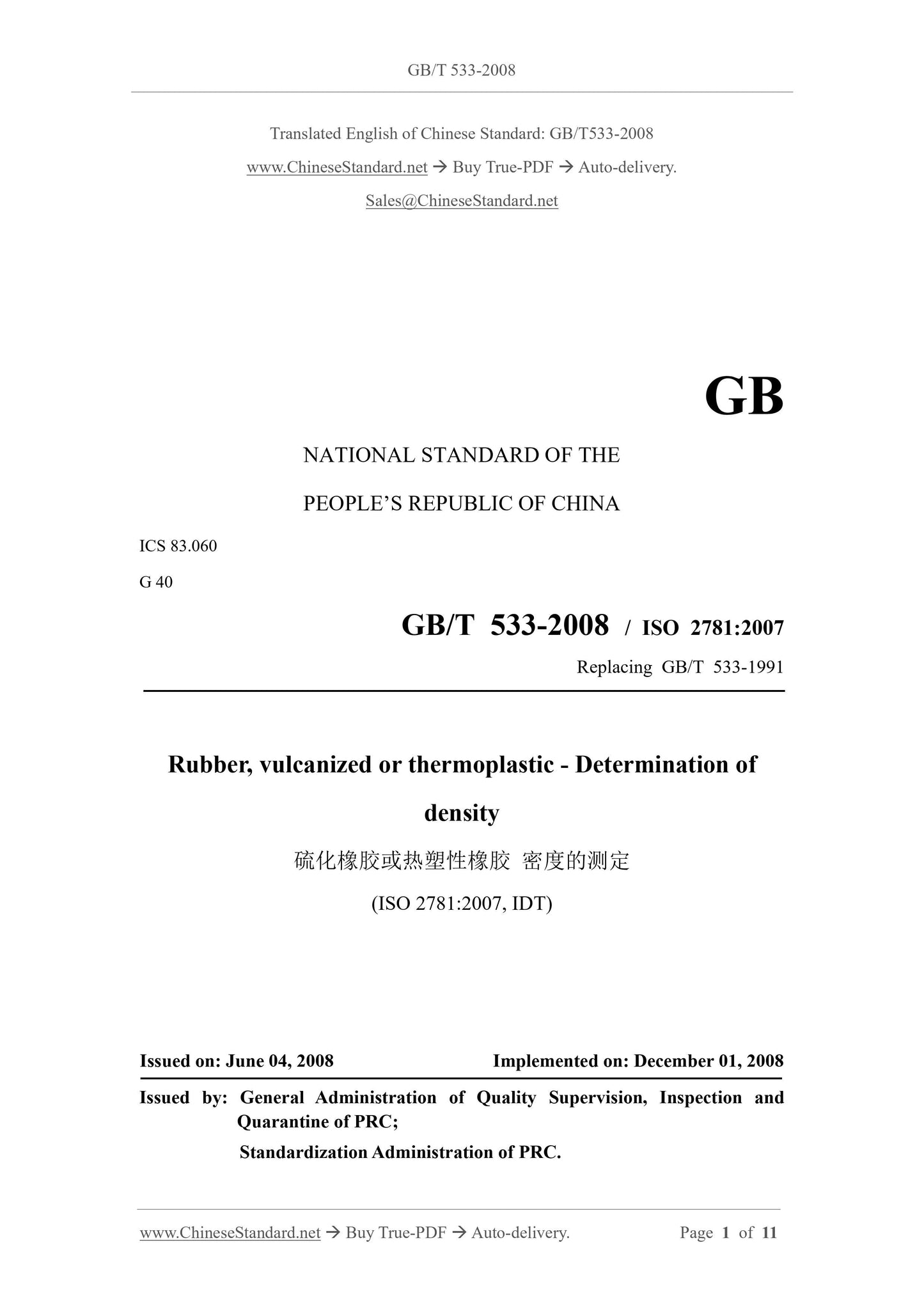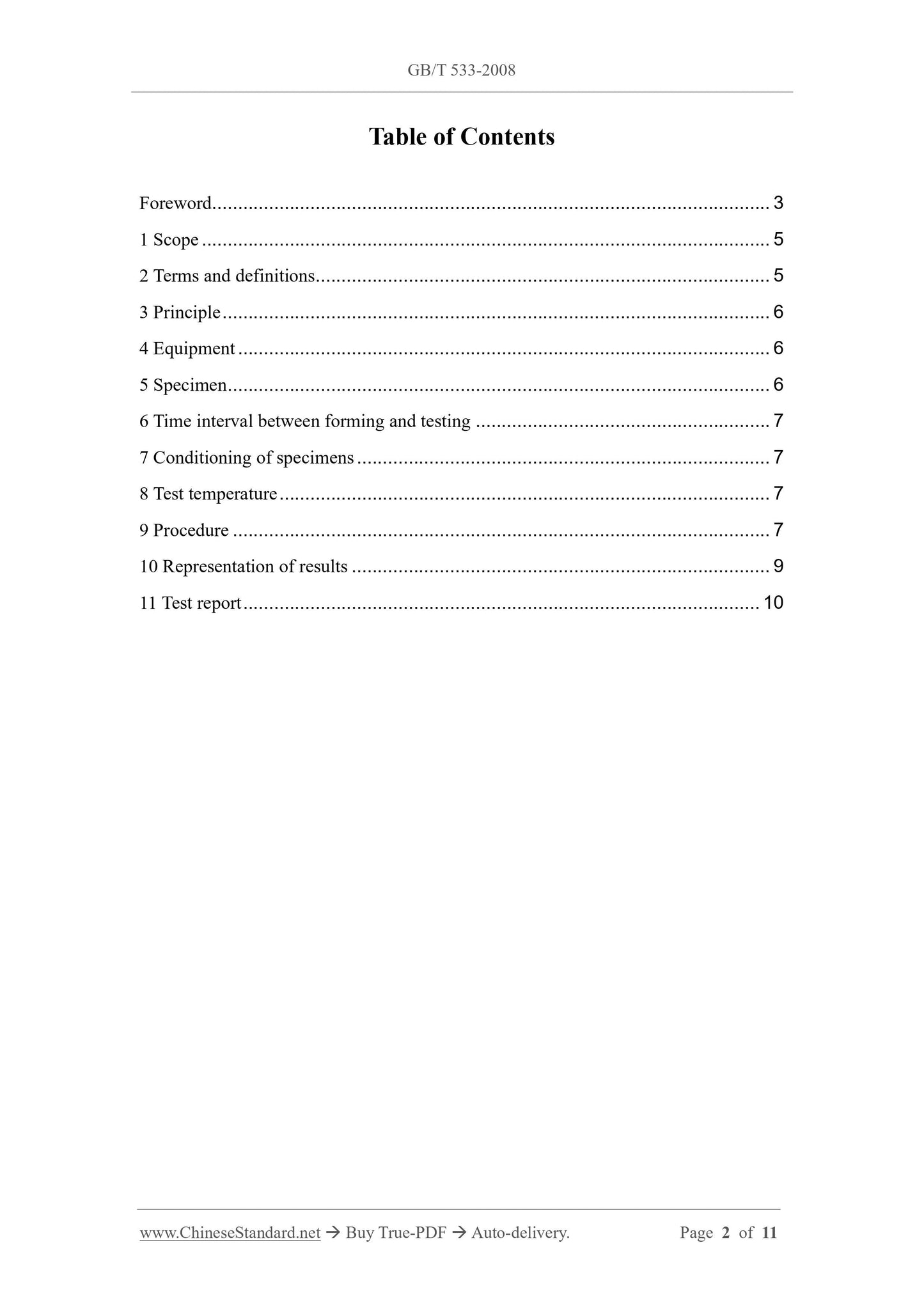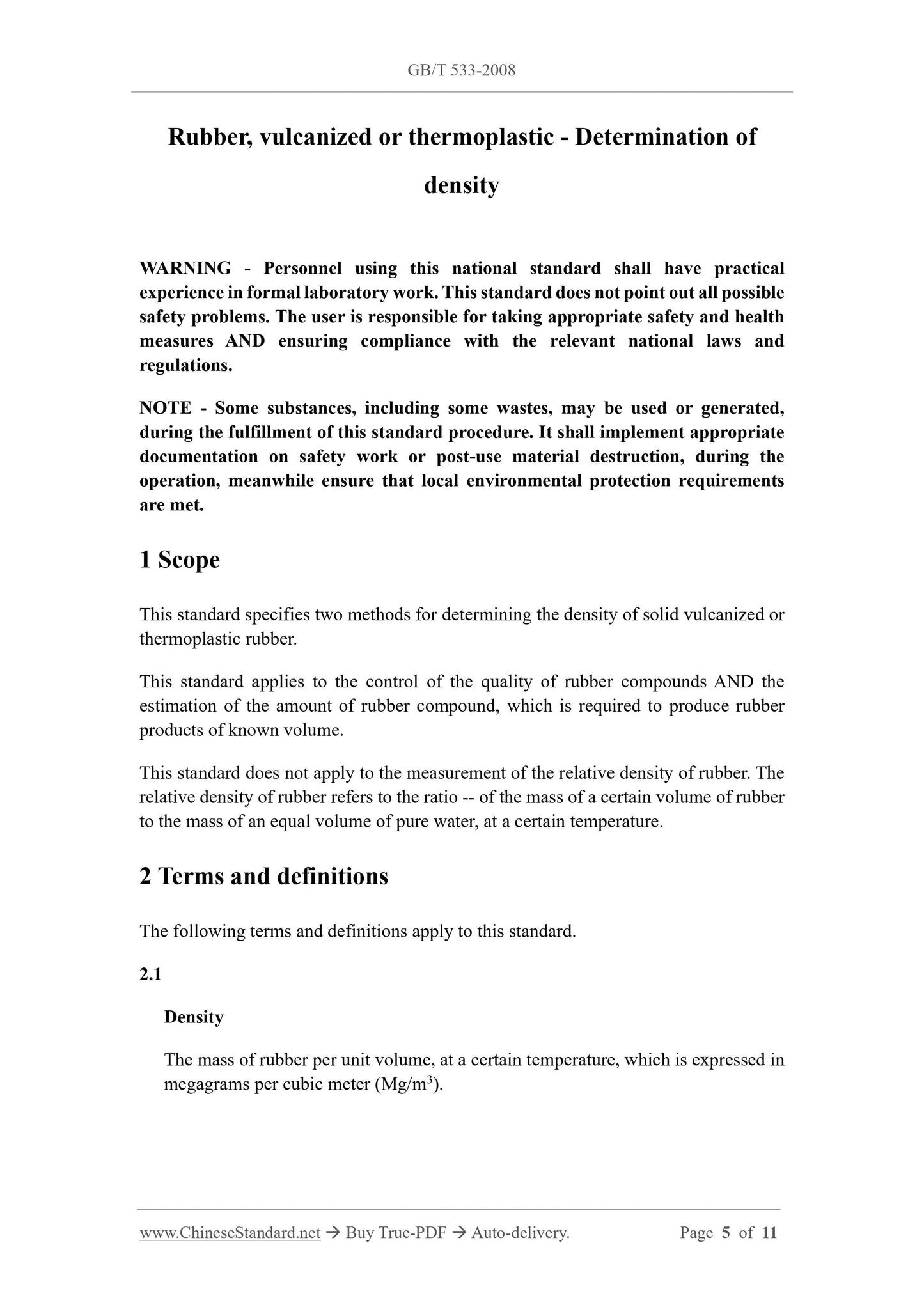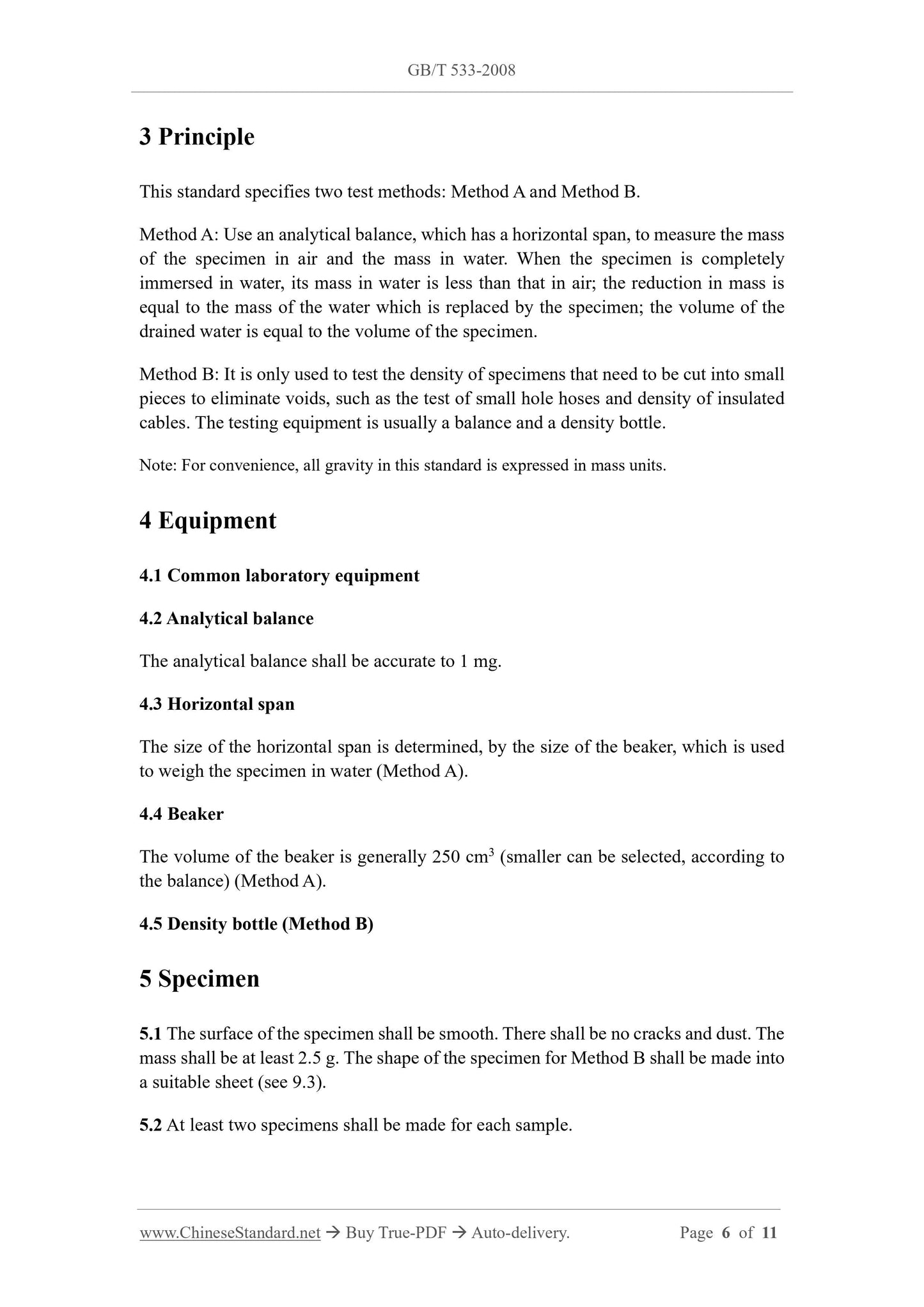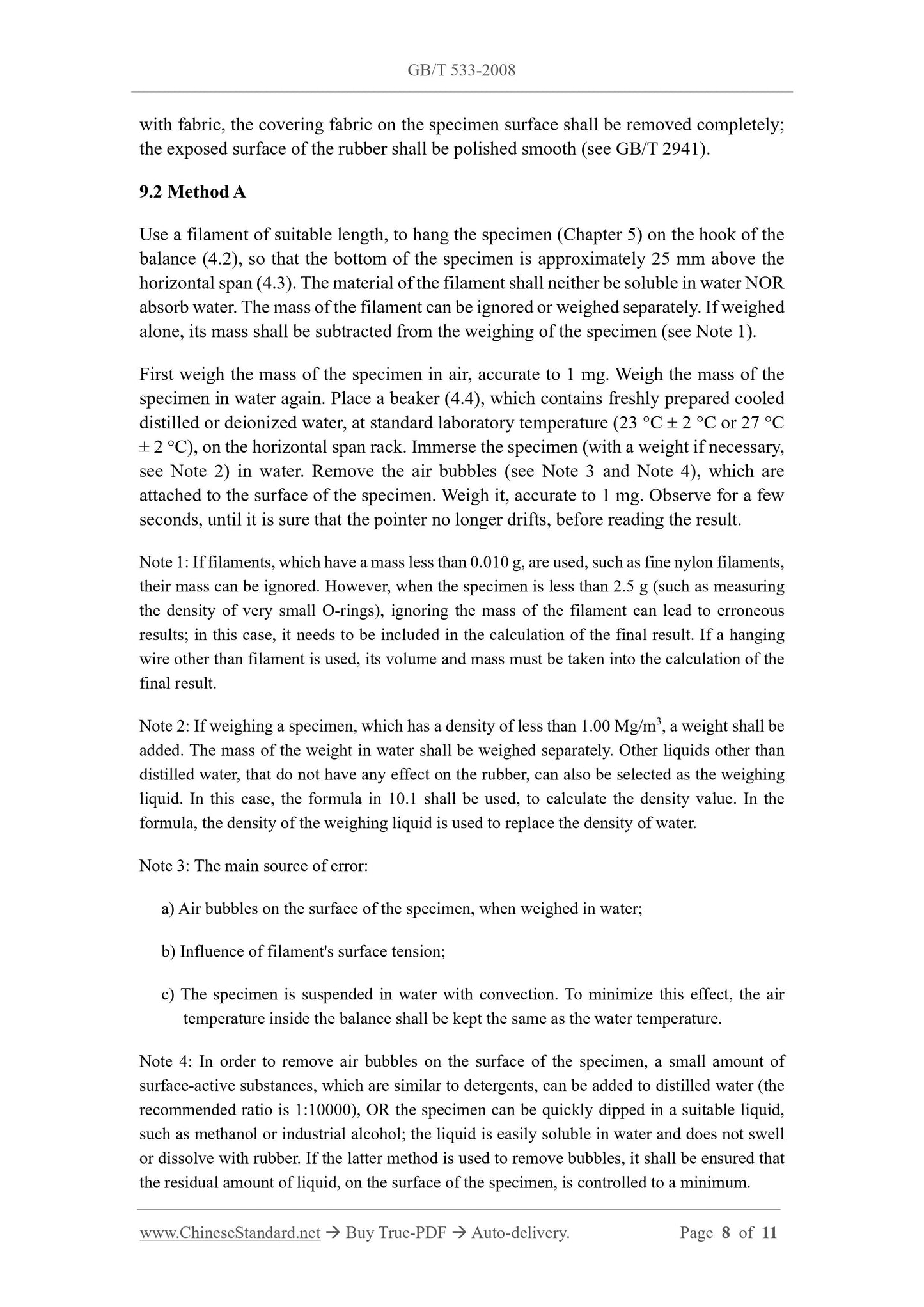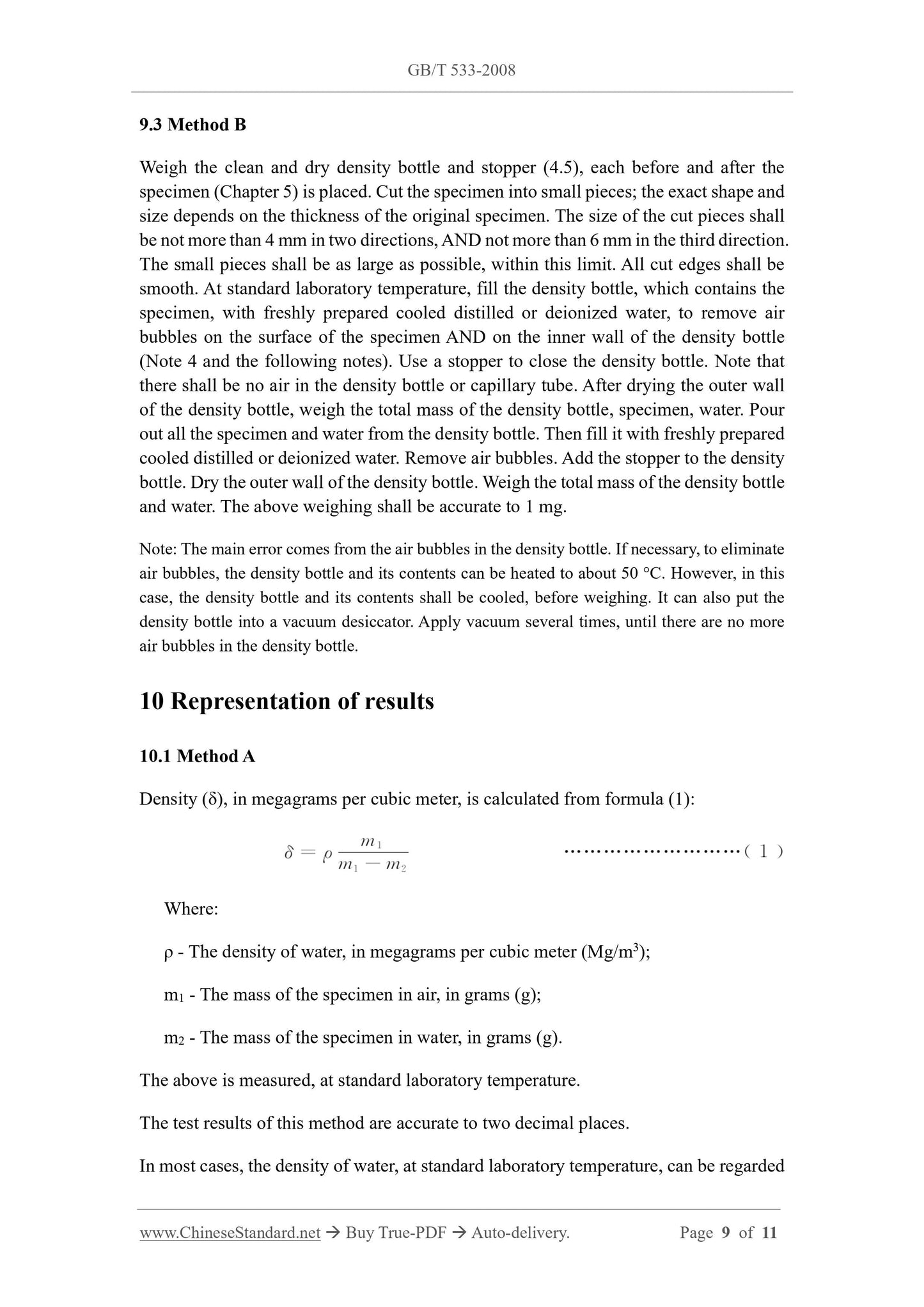1
/
of
6
www.ChineseStandard.us -- Field Test Asia Pte. Ltd.
GB/T 533-2008 English PDF (GB/T533-2008)
GB/T 533-2008 English PDF (GB/T533-2008)
Regular price
$70.00
Regular price
Sale price
$70.00
Unit price
/
per
Shipping calculated at checkout.
Couldn't load pickup availability
GB/T 533-2008: Rubber, vulcanized or thermoplastic -- Determination of density
Delivery: 9 seconds. Download (and Email) true-PDF + Invoice.Get Quotation: Click GB/T 533-2008 (Self-service in 1-minute)
Newer / historical versions: GB/T 533-2008
Preview True-PDF
Scope
This standard specifies two methods for determining the density of solid vulcanized orthermoplastic rubber.
This standard applies to the control of the quality of rubber compounds AND the
estimation of the amount of rubber compound, which is required to produce rubber
products of known volume.
This standard does not apply to the measurement of the relative density of rubber. The
relative density of rubber refers to the ratio -- of the mass of a certain volume of rubber
to the mass of an equal volume of pure water, at a certain temperature.
Basic Data
| Standard ID | GB/T 533-2008 (GB/T533-2008) |
| Description (Translated English) | Rubber, vulcanized or thermoplastic -- Determination of density |
| Sector / Industry | National Standard (Recommended) |
| Classification of Chinese Standard | G40 |
| Classification of International Standard | 83.060 |
| Word Count Estimation | 7,753 |
| Date of Issue | 2008-06-04 |
| Date of Implementation | 2008-12-01 |
| Older Standard (superseded by this standard) | GB/T 533-1991 |
| Adopted Standard | ISO 2781-2007, IDT |
| Regulation (derived from) | National Standard Approval Announcement 2008 No.9 (Total No.122) |
| Issuing agency(ies) | General Administration of Quality Supervision, Inspection and Quarantine of the People's Republic of China, Standardization Administration of the People's Republic of China |
| Summary | This standard specifies two methods of solid vulcanized rubber or thermoplastic rubber density. This standard applies to control the quality of the production mix and volume of rubber products known to estimate the feeding amount of glue needed, This standard does not apply to the measurement of relative density rubber, rubber relative density refers to the quality of a certain volume at a certain temperature rubber with an equal volume of pure water mass ratio. |
Share
